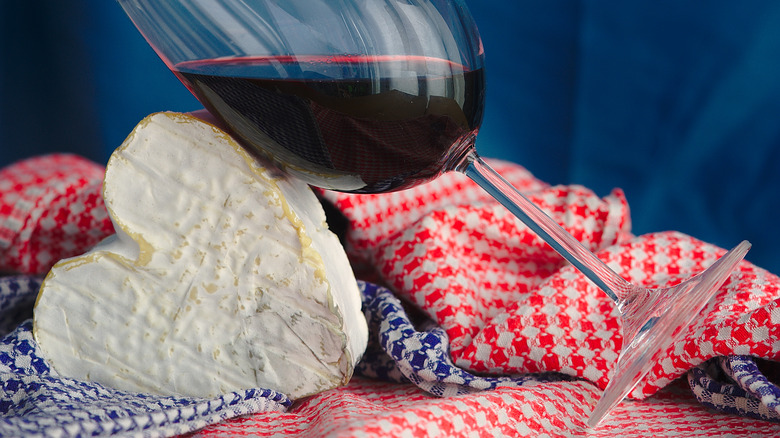Neufchâtel Vs Cream Cheese: What Sets Them Apart?
In the world of spreadable delights, Neufchâtel and cream cheese reign supreme as equally versatile, indulgent choices. While they might appear to be close kin, these dairy delights are distinguished by subtle nuances. For starters, authentic Neufchâtel is made from milk, not cream. Moreover, Neufchâtel has 23 percent milk fat (according to cheesemongersofsantafe.com), while cream cheese hovers at around 33 percent.
Within the realm of cheese production, pasteurization plays a pivotal role in ensuring food safety and extending shelf life. It's the absence of this process, however, that earmarks another difference between these two spreads. While cream cheese undergoes pasteurization, Neufchâtel sidesteps it, preserving a more rustic, farmstead character. This omission grants Neufchâtel a tangy, crumblier texture that stands in contrast to the velvety smoothness of cream cheese.
Beyond that pasteurization aspect, Neufchâtel and cream cheese are comparable in use. They exhibit a versatility that makes them ideal for both savory and sweet applications, from schmearing onto bagels to enriching the base of luscious cheesecakes. Yet, the distinct journeys and traditional backgrounds of these cheeses contribute to a nuanced palette of flavors and culinary potential, one discerning palates will surely appreciate.
Neufchâtel: Unveiling the Origins
From the Normandy region, Neufchâtel is a soft cheese that carries a legacy dating back centuries. The cheese's name pays homage to the picturesque village of Neufchâtel-en-Bray, renowned for its rolling hills and dairy farms, the perfect canvas for cheesemaking. Neufchâtel's origins can be traced to the early medieval period, when cheese was rumored to be initially crafted by accident.
With a penchant for tradition, Neufchâtel gracefully embraces its roots by being traditionally molded into heart shapes. Why a heart shape? This cheese's iconic shape is rumored to be due to English soldiers falling in love with French women during the Hundred Years War, thus inspiring the cheesemakers to shape their cheese rinds into hearts. Additionally, Neufchâtel comes in six different shapes, including a cylinder, square, and even a brick shape, according to Cheese.com. Its flavor profile boasts similarities to cream cheese and its cheesy cousin, brie.
Today, Neufchâtel remains a beloved cheese both in its heart-shaped form and as a versatile ingredient in various culinary endeavors. Its story continues to intertwine with the land from which it originates, representing the fusion of tradition and innovation. Furthermore, Neufchâtel is taken quite seriously in France; authentic Neufchâtel comes with an AOC certificate to differentiate it from the American version (masterclass.com).
Cream Cheese: A Creamy Classic with a Modern Twist
Cream cheese, rooted in the culinary traditions of Europe, eventually found its true home in the United States. The origins of cream cheese can be traced back to the Old World, particularly to areas in England and France. Early renditions were known for their smooth texture and mild tanginess. However, it wasn't until the late 19th century that an American twist transformed this cheese into a household name.
William Lawrence became the unsung hero of the cream cheese revolution in 1872. Hailing from New York, William unintentionally stumbled upon a unique process for creating cream while trying to recreate Neufchâtel cheese (according to Today). By incorporating cream into his cheese production, he inadvertently crafted a smoother, richer version that captured the taste buds of many. Lawrence's creation laid the foundation for what we recognize today as cream cheese. The spread's popularity surged, especially with the rise of bagels in New York City, cementing its status as a breakfast staple.
With time, cream cheese diversified, inspiring creative recipes and culinary innovations that extended beyond the breakfast table. From its European origins to its American evolution, cream cheese has become a global sensation. Whether you prefer cream cheese or have got a soft spot for Neufchâtel, one thing is clear: They are not cut from the same wheel.


